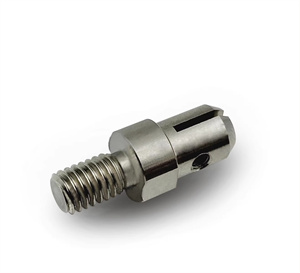CNC Turning is an advanced machining technology that utilizes a computer numerical control system (CNC) to precisely control the motion of the lathe, achieving efficient and high-precision machining of workpieces.
Working principle: CNC Turning controls the movement of the lathe through pre programmed instructions, achieving precise cutting operations. These instructions include the rotation speed of the workpiece, the movement path of the tool, cutting depth, etc. The CNC system converts these instructions into control signals, driving various components of the lathe to move according to predetermined trajectories and speeds, thereby achieving machining of the workpiece.
Processing scope: CNC Turning is mainly used for processing various rotating parts, such as shaft parts, disc parts, etc. It can complete cutting operations such as inner and outer cylindrical surfaces, inner and outer conical surfaces with arbitrary cone angles, complex rotating inner and outer surfaces, and cylindrical and conical threads. At the same time, it can also perform operations such as slotting, drilling, reaming, and boring.
Advantages:
High precision: CNC Turning can achieve machining accuracy at the micrometer level, meeting the needs of high-precision manufacturing.
High efficiency: Through automated processing methods, CNC Turning can significantly improve production efficiency and reduce the possibility of human intervention and errors.
High flexibility: CNC Turning can adapt to different processing requirements by modifying the processing program, and has high flexibility.
Wide application range: CNC Turning is suitable for processing various metal and non-metal materials, with a wide range of processing capabilities.
Application areas: CNC Turning has a wide range of applications in mechanical manufacturing, mold manufacturing, aerospace, and other fields. In mechanical manufacturing, CNC Turning is commonly used to process various shaft parts, gears, etc; In mold manufacturing, CNC Turning can be used to process mold cavities, cores, etc; In the aerospace field, CNC Turning is used to process high-precision components such as aircraft engines and missiles.
Equipment cost and maintenance: Although CNC Turning equipment has a high purchase cost, its advantages of high precision, high efficiency, and high degree of automation enable it to bring significant economic benefits in practical applications. Meanwhile, CNC machine tools require professional technicians for maintenance and upkeep to ensure their normal operation and accuracy.
